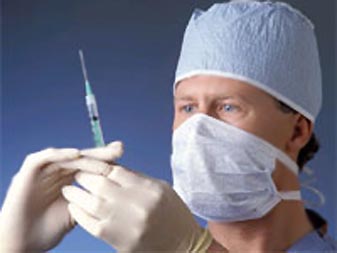Doctors are professionals to whom you give your absolute trust. They complete many years of studying and training to earn a license to practice medicine. Because they seem so knowledgeable, it’s easy to forget that they’re human. Like all humans, doctors make mistakes. When they do, patients sometimes suffer illness, injury, and in the worst cases, wrongful death.
It’s only natural to want to right the wrong, hold the doctor accountable, and receive compensation for additional healthcare costs. Fortunately, not all medical malpractice cases end up in litigation. Doctors and patients, supported by their attorneys, are increasingly coming to settlements through a process called alternative dispute resolution (ADR). ADR saves money for both sides, improves communication, and creates resolutions on a shorter timetable. Most of all, ADR supports the dignity of both parties and keeps disputes from turning unpleasant.
The Legal Standard for Medical Malpractice
To prove medical malpractice, patients must be able to demonstrate that a health care professional acted negligently while providing care. Patients also have to prove that the negligence caused them measurable harm. Courts evaluate most malpractice lawsuits according to four legal elements:
- Professional duty. The doctor has to owe a professional duty to the patient.
- Breach of duty. The care provided to the patient violated the doctor’s professional duty.
- Injury. The patient experienced demonstrable harm caused by the breach of duty.
- Resulting damages. The patient incurred financial costs related to complications and additional care.
Doctors are correct to argue that many lawsuits are without merit, and the constant threat of litigation burdens them with high liability insurance costs. According to the American Academy of Orthopaedic Surgeons, only 15 percent of medical malpractice lawsuits can actually demonstrate breach of professional duty and associated harm. However, patients who have suffered real harm should be able to recover damages and hold doctors accountable. ADR creates the best of both worlds, protecting patients while lowering both burden and costs for doctors.
What Health Care ADR Looks Like
Dispute resolution professionals come from many different backgrounds. Some have careers as attorneys and work on healthcare ADR based on their professional experience. Others train specifically for healthcare ADR, earning degrees like the MS in Negotiation and Dispute Resolution. Whatever the facilitator’s background, the ADR process involves some or all of these steps:
- Pre-trial screening. Before hearing medical malpractice cases, many courts ask professionals with legal and healthcare backgrounds to evaluate cases for merit. The case might be thrown out, proceed to trial, or be referred for ADR.
- Mediation. Both the plaintiff and the defendant work with an ADR professional to come to a negotiated settlement. The settlement isn’t legally binding until it’s entered as a court judgment, and either party can ask for litigation at any time. Mediation often resolves cases quickly for patients and saves doctors as much as $50,000 per case in attorney’s fees.
- Arbitration. During arbitration, an impartial third party hears the plaintiff and defendant and reviews the evidence. The arbitrator then makes a ruling on the case, and the ruling is enforceable by the court.
Successful ADR Models to Investigate
If you’ve been a victim of medical malpractice and you want to investigate ADR as a litigation alternative, other patients have used these ADR models with success:
- COPIC 3Rs. The Colorado Physician’s Insurance Company (COPIC) has developed a 3R model for health care ADR: recognize, respond, and resolve. Physicians file an occurrence report. As long as the case doesn’t involve a patient’s death, plaintiff attorneys, or a written compensation demand, the physician can offer to work with both the patient and a 3R administrator. In most cases, the 3R administrator offers on-the-spot compensation without requiring a waiver or release from the patient.
- UIMCC 7 Pillars. The University of Illinois Medical Center at Chicago encourages physicians to self-report possible patient safety issues. If the patient was harmed, the case is investigated within 72 hours with the assistance of a patient liaison. In addition to obtaining a favorable outcome for the patient, the UIMCC model uses the cases to focus on system improvement, additional education, and better data tracking.
ADR is becoming more popular as an alternative to medical malpractice lawsuits. It keeps healthcare costs down for everyone. Most importantly, it gets results for patients.
Article Submitted by Community Writer





